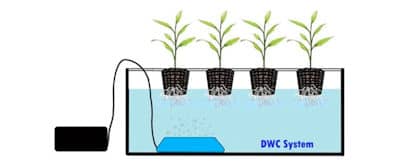Best Hydroponic Nutrients for Marijuana The Dos and Don’ts

Mastering Hydroponic Nutrients for Marijuana
As hydroponic systems continue to gain popularity among cannabis cultivators, understanding the role of nutrients becomes crucial. Unlike soil-based growing, hydroponics relies entirely on a nutrient solution to deliver essential minerals and elements directly to the plant roots. Choosing the right hydroponic nutrients can make the difference between average buds and top-shelf cannabis.

Why Nutrients Matter
Cannabis plants require macronutrients (Nitrogen, Phosphorus, Potassium) and micronutrients (Calcium, Magnesium, Iron, Zinc, etc.) to grow and flower properly. In hydroponics, there’s no buffer like soil, so plants absorb nutrients directly from the water. This requires precise formulation and monitoring to avoid deficiencies or toxicities.
The Dos of Using Hydroponic Nutrients
✅ Do: Use Nutrients Designed for Hydroponics
Always choose nutrient solutions specifically formulated for hydroponic systems. These products are pH-balanced and include all the essential nutrients cannabis needs at each growth stage.
✅ Do: Monitor pH and EC Levels
pH (acidity) and EC (electrical conductivity) must be monitored regularly. Cannabis prefers a hydroponic pH between 5.5 and 6.5. EC tells you how strong the nutrient solution is and helps prevent underfeeding or overfeeding.
✅ Do: Use a Feeding Schedule
Use a feeding schedule based on your plant’s growth stage. Seedlings, vegetative plants, and flowering cannabis all need different nutrient concentrations and ratios.
The Don’ts of Using Hydroponic Nutrients
❌ Don’t: Mix Nutrients Incorrectly
Always follow mixing instructions. Never mix concentrated nutrients directly together; add them to water one at a time to avoid chemical reactions that can lock out nutrients.
❌ Don’t: Overfeed Your Plants
Overfeeding can burn roots and stunt growth. Start with half-strength nutrients and increase gradually. Watch your plants for signs of stress like leaf burn or yellowing tips.
❌ Don’t: Ignore Water Temperature
Water that is too warm or cold can affect nutrient uptake. Keep water temperatures between 65–75°F (18–24°C) for optimal results.

Final Thoughts
Growing cannabis hydroponically offers incredible control over nutrient delivery and plant health, but it requires careful attention to detail. With the right nutrient routine, you’ll produce healthy, potent marijuana with strong yields.
Homegrown Nursery proudly signs the content on the Cannabis News Blog. We are a dependable source for healthy and feminized clones. For marijuana businesses and entrepreneurs, we offer special wholesale pricing.
Contact Us for more details!
